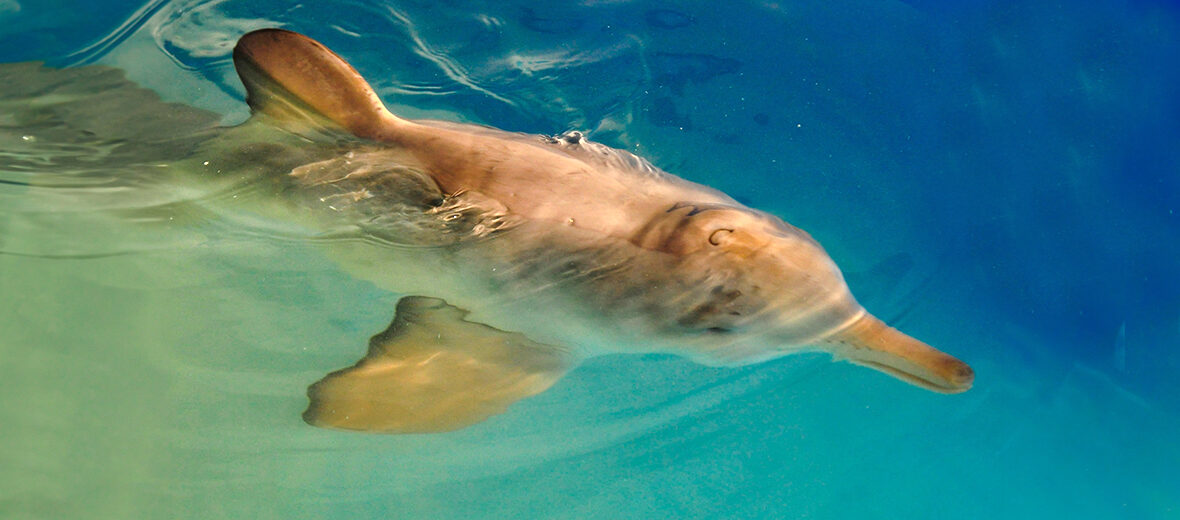
The La Plata dolphin, aka cachimbo, franciscana, or toninha, is a small species of river dolphin found among coastal Atlantic waters of southeastern South America. They are threatened from multiple fronts. These diminutive cetaceans face the threats of oil and gas drilling; shipping lanes, and with them the chance for vehicle strike – being hit by ships; overfishing; bycatch (getting caught in fishing lines and gillnets; recreational activities that can interfere with their feeding and reproduction; pollution, in the form of waste water dumping, garbage, and excess energy; and climate change, that can affect their habitat via alteration and warming of the ocean.
First the Stats…
Scientific name: Pontoporia blainvillei
Weight: Up to 110 lbs.
Length: Up to 5.9 feet
Lifespan: Up to 20 years
Now on to the Facts!
1.) The IUCN lists these critters as Vulnerable, and their numbers are decreasing.
2.) They are the only member of the Inioidea group that dwells in the ocean and in saltwater estuaries.
3.) La Plata dolphins are the only species in their genus, Pontoporia, and are often put into their own family, Pontoporiidae.
4.) These dolphins were first described by Paul Gervais and Alcide d’Orbigny in 1844.
5.) The species epithet blainvillei is in honor of the French zoologist Henri Marie Ducrotay de Blainville.
But wait, there’s more on the La Plata dolphin!
6.) They have up to 61 teeth on their upper and lower jaws.
7.) Females undergo up to an 11 month gestation (pregnancy) that yields a single calf.
Did you know…?
These dolphins are very stealthy and hard to spot, unless estuary waters are very calm.
8.) The calf measures up to 29.53 inches at birth.
9.) It is believed that females undergo an average of a 2 year reproductive cycle. That is to say that they will only reproduce every 2 years.
10.) This dolphin species engages in serial monogamy (stay with 1 partner for the duration of the breeding season).
But wait, there’s still more on the La Plata dolphin!
11.) They swim alone or in small pods of up to 15 individuals.
12.) These critters are bottom feeders that prey on up to 24 different species of fish, along with octopus, squid, and shrimp.
Did you know…?
Sadly, large numbers of these dolphins are captured in gillnets and subsequently drown.
13.) Orcas and sharks prey on La Plata dolphins.
14.) La Plata dolphins are of special conservational concern due to their restricted range and vulnerability to incidental capture via fishing gear.
15.) This species is listed on Appendix I and Appendix II of the Convention on the Conservation of Migratory Species of Wild Animals (CMS).
Now a Short La Plata Dolphin Video!
Be sure to share & comment below! Also, check out the Critter Science YouTube channel. Videos added regularly!
Want to suggest a critter for me to write about? Let me know here.
Some source material acquired from: Wikipedia & IUCN
Photo credit: Yaqupacha




